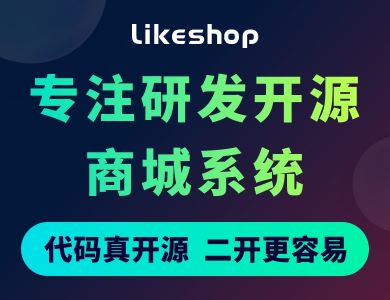> 编写: [roya](https://github.com/RoyaAoki) 原文:[https://developer.android.com/training/wearables/ui/layouts.html](https://developer.android.com/training/wearables/ui/layouts.html)
可穿戴设备使用与手持Android设备同样的布局技术,但需要有具体的约束来设计。不要以一个手持app的角度开发功能和UI以期待提供一个好的体验。关于如何设计优秀的可穿戴apps的更多信息,请阅读[Android Wear Design Guidelines](https://developer.android.com/design/wear/index.html)。
当你为Android Wear apps创建layouts时,你需要同时考虑方形和圆形屏幕的设备。在圆形Android Wear设备上所有放置在靠近屏幕边角的内容会被剪裁掉,所以为方形屏幕设计的layouts不能在圆形设备上很好的工作。对这类问题是示范请查看这个视屏[Full Screen Apps for Android Wear](https://www.youtube.com/watch?v=naf_WbtFAlY)。
举个例子,figure 1展示了下面的layout在圆形和方形屏幕上看起来是怎样的:

**Figure 1.**_为方形屏幕设计的layouts不能在圆形设备上很好工作的示范_
~~~
<LinearLayout xmlns:android="http://schemas.android.com/apk/res/android"
xmlns:tools="http://schemas.android.com/tools"
android:layout_width="match_parent"
android:layout_height="match_parent"
android:orientation="vertical">
<TextView
android:id="@+id/text"
android:layout_width="wrap_content"
android:layout_height="wrap_content"
android:text="@string/hello_square" />
</LinearLayout>
~~~
text没有正确的显示在圆形屏幕上。
Wearable UI Library为这个问题提供了两种不同的解决方案:
- 为圆形和方形屏幕定义不同的layouts。你的app会在运行时检查设备屏幕形状后inflates正确的layout。
- 用一个包含在library里面的特殊layout同时适配方形和圆形设备。这个layout会在不同形状的设备屏幕窗口中插入间隔。
当你希望你的app在不同形状的屏幕上看起来不同时,你可以典型的使用第一种方案。当你希望用一个相似的layout在两种屏幕上且在圆形屏幕上没有视图被边缘剪裁时,你可以使用第二种方案。
### 添加Wearable UI库
Android Studio会在你使用工程向导时includes你在**wear** module中的Wearable UI库。为了编译你的工程和这个库,确保 _Extras > Google Repository_ 包已经被安装在Android SDK manager里、以下的**wear** module依赖被包含在你的**build.gradle**文件中。
~~~
dependencies {
compile fileTree(dir: 'libs', include: ['*.jar'])
compile 'com.google.android.support:wearable:+'
compile 'com.google.android.gms:play-services-wearable:+'
}
~~~
要实现以下的布局方法 **'com.google.android.support:wearable'** 依赖是必须的。
浏览[API reference documentation](https://developer.android.com/reference/android/support/wearable/view/package-summary.html)查看Wearable UI类库。
### 为方形和圆形屏幕指定不同的Layouts
在Wearable UI库中的**WatchViewStub**类允许你为方形和圆形屏幕指定不同的layouts。这个类会在运行时检查屏幕形状后inflates符合的layout。
在你的app中使用这个类以应对不用和的屏幕形状:
- 在你的[activity](# "An activity represents a single screen with a user interface.")'s layout以WatchViewStub为主元素。
- 为方形屏幕指定一个layout解释文件使用rectLayout属性。
- 为圆形屏幕指定一个layout解释文件使用roundLayout属性。
定义你的[activity](# "An activity represents a single screen with a user interface.")'s layout类似于:
~~~
<android.support.wearable.view.WatchViewStub
xmlns:android="http://schemas.android.com/apk/res/android"
xmlns:app="http://schemas.android.com/apk/res-auto"
xmlns:tools="http://schemas.android.com/tools"
android:id="@+id/watch_view_stub"
android:layout_width="match_parent"
android:layout_height="match_parent"
app:rectLayout="@layout/rect_activity_wear"
app:roundLayout="@layout/round_activity_wear">
</android.support.wearable.view.WatchViewStub>
~~~
在你的[activity](# "An activity represents a single screen with a user interface.")中inflate这个layout:
~~~
@Override
protected void onCreate(Bundle savedInstanceState) {
super.onCreate(savedInstanceState);
setContentView(R.layout.activity_wear);
}
~~~
然后为方形和圆形屏幕创建不同的layout描述文件,在这个例子中,你需要创建文件 _res/layout/rect_activity_wear.xml_ 和 _res/layout/round_activity_wear.xml_ 。像创建手持apps的layouts一样定义这些layouts,但同时考虑可穿戴设备的限制。系统会在运行时以屏幕形状inflates适合的layout。
### 取得layout views
你为方形或圆形屏幕定义的layouts在WatchViewStub检查完屏幕形状之前不会被inflated。所以你的app不能立即取得它们的views。为了取得这些views,你需要在你的[activity](# "An activity represents a single screen with a user interface.")中设置一个listener,当屏幕适配的layout被inflated时会通知这个listener:
~~~
@Override
protected void onCreate(Bundle savedInstanceState) {
super.onCreate(savedInstanceState);
setContentView(R.layout.activity_wear);
WatchViewStub stub = (WatchViewStub) findViewById(R.id.watch_view_stub);
stub.setOnLayoutInflatedListener(new WatchViewStub.OnLayoutInflatedListener() {
@Override public void onLayoutInflated(WatchViewStub stub) {
// Now you can access your views
TextView tv = (TextView) stub.findViewById(R.id.text);
...
}
});
}
~~~
### 使用形状感知的Layout
包含在你的Wearable UI库中的 **BoxInsetLayout** 继承自 [FrameLayout](https://developer.android.com/reference/android/widget/FrameLayout.html)允许你定义一个同时适配方形和圆形屏幕的layout。这个类适用于需要根据屏幕形状插入间隔的情况并允许你简单的对齐views在屏幕边缘或中心。
figure 2中,在 **BoxInsetLayout** 里的灰色方形区域会在圆形屏幕里应用所需的窗口间隔后自动放置child views。为了显示在这个区域内,子views需要具体声明附加属性 _layout_box_ 为这些值:
- 一个_top_, _bottom_, _left_, _right_的复合属性。比如 _"left|top"_ 说明子view的左和上边缘如figure 2。
- _all_ 说明子view的内容在灰色方形内如figure 2。

**Figure 2.**_在圆形屏幕上的窗口间隔_
在方形屏幕上,窗口间隔为0、 _layout_box_ 属性会被忽略。

**Figure 3.**_同一个layout定义工作在方形和圆形屏幕上_
这个layout在figure 3中展示了在圆形和方形屏幕上使用 _BoxInsetLayout_ :
~~~
<android.support.wearable.view.BoxInsetLayout
xmlns:android="http://schemas.android.com/apk/res/android"
xmlns:app="http://schemas.android.com/apk/res-auto"
* android:background="@drawable/robot_background"
android:layout_height="match_parent"
android:layout_width="match_parent"
* android:padding="15dp">
<FrameLayout
android:layout_width="match_parent"
android:layout_height="match_parent"
* android:padding="5dp"
* app:layout_box="all">
<TextView
android:gravity="center"
android:layout_height="wrap_content"
android:layout_width="match_parent"
android:text="@string/sometext"
android:textColor="@color/black" />
<ImageButton
android:background="@null"
android:layout_gravity="bottom|left"
android:layout_height="50dp"
android:layout_width="50dp"
android:src="@drawable/ok" />
<ImageButton
android:background="@null"
android:layout_gravity="bottom|right"
android:layout_height="50dp"
android:layout_width="50dp"
android:src="@drawable/cancel" />
</FrameLayout>
</android.support.wearable.view.BoxInsetLayout>
~~~
注意layout中这些被加*的部分
-
android:padding="15dp"
这行指定了 _BoxInsetLayout_ 元素的padding。因为在圆形设备商窗口间隔大于15dp,这个padding只工作在方形屏幕上。
-
android:padding="5dp"
这行指定 _FrameLayout_ 内部的元素padding。这个padding同时生效在方形和圆形屏幕上。在方形屏幕上总的padding是20dp(15+5)、在圆形屏幕上是5dp。
-
app:layout_box="all"
这行声明 _FrameLayout_ 和它的子views都被放在有窗口间隔的圆形屏幕里。这行在方形屏幕上没有任何效果。
- 序言
- Android入门基础:从这里开始
- 建立第一个App
- 创建Android项目
- 执行Android程序
- 建立简单的用户界面
- 启动其他的Activity
- 添加ActionBar
- 建立ActionBar
- 添加Action按钮
- 自定义ActionBar的风格
- ActionBar的覆盖层叠
- 兼容不同的设备
- 适配不同的语言
- 适配不同的屏幕
- 适配不同的系统版本
- 管理Activity的生命周期
- 启动与销毁Activity
- 暂停与恢复Activity
- 停止与重启Activity
- 重新创建Activity
- 使用Fragment建立动态的UI
- 创建一个Fragment
- 建立灵活动态的UI
- Fragments之间的交互
- 数据保存
- 保存到Preference
- 保存到文件
- 保存到数据库
- 与其他应用的交互
- Intent的发送
- 接收Activity返回的结果
- Intent过滤
- Android分享操作
- 分享简单的数据
- 给其他App发送简单的数据
- 接收从其他App返回的数据
- 给ActionBar增加分享功能
- 分享文件
- 建立文件分享
- 分享文件
- 请求分享一个文件
- 获取文件信息
- 使用NFC分享文件
- 发送文件给其他设备
- 接收其他设备的文件
- Android多媒体
- 管理音频播放
- 控制音量与音频播放
- 管理音频焦点
- 兼容音频输出设备
- 拍照
- 简单的拍照
- 简单的录像
- 控制相机硬件
- 打印
- 打印照片
- 打印HTML文档
- 打印自定义文档
- Android图像与动画
- 高效显示Bitmap
- 高效加载大图
- 非UI线程处理Bitmap
- 缓存Bitmap
- 管理Bitmap的内存
- 在UI上显示Bitmap
- 使用OpenGL ES显示图像
- 建立OpenGL ES的环境
- 定义Shapes
- 绘制Shapes
- 运用投影与相机视图
- 添加移动
- 响应触摸事件
- 添加动画
- View间渐变
- 使用ViewPager实现屏幕侧滑
- 展示卡片翻转动画
- 缩放View
- 布局变更动画
- Android网络连接与云服务
- 无线连接设备
- 使得网络服务可发现
- 使用WiFi建立P2P连接
- 使用WiFi P2P服务
- 执行网络操作
- 连接到网络
- 管理网络
- 解析XML数据
- 高效下载
- 为网络访问更加高效而优化下载
- 最小化更新操作的影响
- 避免下载多余的数据
- 根据网络类型改变下载模式
- 云同步
- 使用备份API
- 使用Google Cloud Messaging
- 解决云同步的保存冲突
- 使用Sync Adapter传输数据
- 创建Stub授权器
- 创建Stub Content Provider
- 创建Sync Adpater
- 执行Sync Adpater
- 使用Volley执行网络数据传输
- 发送简单的网络请求
- 建立请求队列
- 创建标准的网络请求
- 实现自定义的网络请求
- Android联系人与位置信息
- Android联系人信息
- 获取联系人列表
- 获取联系人详情
- 使用Intents修改联系人信息
- 显示联系人头像
- Android位置信息
- 获取最后可知位置
- 获取位置更新
- 显示位置地址
- 创建和监视地理围栏
- Android可穿戴应用
- 赋予Notification可穿戴特性
- 创建Notification
- 在Notifcation中接收语音输入
- 为Notification添加显示页面
- 以Stack的方式显示Notifications
- 创建可穿戴的应用
- 创建并运行可穿戴应用
- 创建自定义的布局
- 添加语音功能
- 打包可穿戴应用
- 通过蓝牙进行调试
- 创建自定义的UI
- 定义Layouts
- 创建Cards
- 创建Lists
- 创建2D-Picker
- 创建确认界面
- 退出全屏的Activity
- 发送并同步数据
- 访问可穿戴数据层
- 同步数据单元
- 传输资源
- 发送与接收消息
- 处理数据层的事件
- Android TV应用
- 创建TV应用
- 创建TV应用的第一步
- 处理TV硬件部分
- 创建TV的布局文件
- 创建TV的导航栏
- 创建TV播放应用
- 创建目录浏览器
- 提供一个Card视图
- 创建详情页
- 显示正在播放卡片
- 帮助用户在TV上探索内容
- TV上的推荐内容
- 使得TV App能够被搜索
- 使用TV应用进行搜索
- 创建TV游戏应用
- 创建TV直播应用
- TV Apps Checklist
- Android企业级应用
- Ensuring Compatibility with Managed Profiles
- Implementing App Restrictions
- Building a Work Policy Controller
- Android交互设计
- 设计高效的导航
- 规划屏幕界面与他们之间的关系
- 为多种大小的屏幕进行规划
- 提供向下和横向导航
- 提供向上和历史导航
- 综合:设计样例 App
- 实现高效的导航
- 使用Tabs创建Swipe视图
- 创建抽屉导航
- 提供向上的导航
- 提供向后的导航
- 实现向下的导航
- 通知提示用户
- 建立Notification
- 当启动Activity时保留导航
- 更新Notification
- 使用BigView风格
- 显示Notification进度
- 增加搜索功能
- 建立搜索界面
- 保存并搜索数据
- 保持向下兼容
- 使得你的App内容可被Google搜索
- 为App内容开启深度链接
- 为索引指定App内容
- Android界面设计
- 为多屏幕设计
- 兼容不同的屏幕大小
- 兼容不同的屏幕密度
- 实现可适应的UI
- 创建自定义View
- 创建自定义的View类
- 实现自定义View的绘制
- 使得View可交互
- 优化自定义View
- 创建向后兼容的UI
- 抽象新的APIs
- 代理至新的APIs
- 使用旧的APIs实现新API的效果
- 使用版本敏感的组件
- 实现辅助功能
- 开发辅助程序
- 开发辅助服务
- 管理系统UI
- 淡化系统Bar
- 隐藏系统Bar
- 隐藏导航Bar
- 全屏沉浸式应用
- 响应UI可见性的变化
- 创建使用Material Design的应用
- 开始使用Material Design
- 使用Material的主题
- 创建Lists与Cards
- 定义Shadows与Clipping视图
- 使用Drawables
- 自定义动画
- 维护兼容性
- Android用户输入
- 使用触摸手势
- 检测常用的手势
- 跟踪手势移动
- Scroll手势动画
- 处理多触摸手势
- 拖拽与缩放
- 管理ViewGroup中的触摸事件
- 处理键盘输入
- 指定输入法类型
- 处理输入法可见性
- 兼容键盘导航
- 处理按键动作
- 兼容游戏控制器
- 处理控制器输入动作
- 支持不同的Android系统版本
- 支持多个控制器
- Android后台任务
- 在IntentService中执行后台任务
- 创建IntentService
- 发送工作任务到IntentService
- 报告后台任务执行状态
- 使用CursorLoader在后台加载数据
- 使用CursorLoader执行查询任务
- 处理查询的结果
- 管理设备的唤醒状态
- 保持设备的唤醒
- 制定重复定时的任务
- Android性能优化
- 管理应用的内存
- 代码性能优化建议
- 提升Layout的性能
- 优化layout的层级
- 使用include标签重用layouts
- 按需加载视图
- 使得ListView滑动顺畅
- 优化电池寿命
- 监测电量与充电状态
- 判断与监测Docking状态
- 判断与监测网络连接状态
- 根据需要操作Broadcast接受者
- 多线程操作
- 在一个线程中执行一段特定的代码
- 为多线程创建线程池
- 启动与停止线程池中的线程
- 与UI线程通信
- 避免出现程序无响应ANR
- JNI使用指南
- 优化多核处理器(SMP)下的Android程序
- Android安全与隐私
- Security Tips
- 使用HTTPS与SSL
- 为防止SSL漏洞而更新Security
- 使用设备管理条例增强安全性
- Android测试程序
- 测试你的Activity
- 建立测试环境
- 创建与执行测试用例
- 测试UI组件
- 创建单元测试
- 创建功能测试
- 術語表
